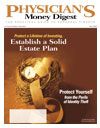Publication
Article
Turn Your Mortgage Debt into a Positive
Author(s):
Not so long ago, paying off the mortgage wasa family's principal financial goal. Homesweren't investments, they were places tolive. Many of our parents and grandparents viewed amortgage as an inevitable evil, akin to death andtaxes. Considering their specific circumstances, ourparents and grandparents weren't wrong. Before thelate 1960s, housing value appreciation was almostnonexistent. If a homeowner was only paying interestin a housing market with little or no appreciation,and lost their job, they often lost their home. It's nowonder our parents and grandparents couldn't waitto pay off their mortgages. The frightening numberof foreclosures during the Great Depression changedAmericans' attitudes toward homeownership andcreated a bias against anything that wasn't a traditional30-year fixed-rate mortgage.
Debt That Works for You
Times have changed, and so have our attitudestoward debt. A generation ago, borrowing$100,000 or more for medical school student loansmay have seemed shocking, but today we view it asa "smart" debt—one that leads to higher earningsin the long run. Similarly, savvy homeowners arenow using their mortgages as tools in reaching theiroverall financial goals. Today, there are countlessmortgage loan products—from interest-only loansto adjustable-rate mortgages (ARMs) to pledgedasset loans—that allow homeowners to minimizetheir cash outflow and use that savings for investmentsor to pay down other debt, including thosemedical school loans.
With an interest-only loan, a homeowner canleverage their investment in their house, avoid payingdown principal for some period of time (usually upto 10 years), and invest the principal component ofthe payment in alternative investments or non-taxdeductibledebt reduction. This creates a powerfulvehicle for reaching overall financial goals. Best ofall, the interest on a mortgage is one of the few taxdeductions that survived tax reform legislation, andmortgage rates tend to be relatively low compared toother financing products.
ARMed and Dangerous
ARMs have become the most popular mortgageproduct among the more affluent segment of theAmerican population. ARMs come in two types:traditional ARMs, with interest rates that adjustmonthly, semiannually, or annually; and hybridARMs, which carry fixed interest rates for 3, 5, 7, or10 years, and then adjust annually thereafter. Theseproducts afford the borrower the opportunity to fixan interest rate for a set number of years—rates thatare generally significantly lower than a 30-yearfixed-rate loan.
Another characteristic of many ARMs is that theyare often available on a pledged asset basis. Thismeans a borrower can finance up to 100% of thevalue of a residential property by pledging additionalcollateral in the form of marketable securities. Thepledged asset loan allows borrowers to maintain thebalance in their securities portfolio, instead of liquidatingassets for a down payment. This avoids incurringcapital gains taxes on profits associated with asecurities sale, and allows the borrower's portfolio tocontinue to appreciate. Although a portion of theborrower's portfolio is pledged against the mortgageloan, the borrower is usually able to trade in and outof that portfolio as long as the agreed upon minimumbalance is maintained.
Joseph H. Badal is CEO of Thornburg Mortgage Home Loans,
Inc, the mortgage lending subsidiary of Thornburg Mortgage,
Inc, a single-family residential mortgage lender with $29.2 billion
in assets focused principally on the jumbo segment of the
mortgage market. He welcomes questions or comments at
plus-program@thornburgmortgage.com.
